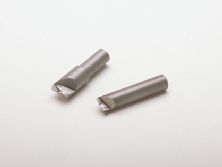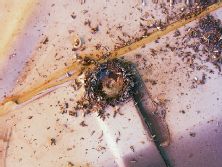Often, when restoring or modifying a car, one must disassemble parts of the bodywork. A Sawzall® ("Tool of the Month," ec 05/02) will make a car inches or feet shorter in any direction in just minutes, and with great style. But if one plans to put the panel back in place along the original line of separation, a bit more delicacy is called for. It turns out that most cars are still assembled with spot welds. Removing just the spots will accomplish the same task as barbarically sundering the panels, while allowing for them to be rejoined later.
Do you need to replace a rusty floor pan? You could cut out most of the one you have, leaving the edges, and weld in most of a replacement, or you could delicately separate the entire panel and weld in an entire replacement, making the car virtually as if it had never been damaged. Need to replace a fender that's not bolted on? Do you have a car that's perfect with the exception of having a sunroof when you want a lighter, stronger, solid steel roof with more interior headroom? Is the roof getting in the way of welding in a roll cage? Removing the spot welds that hold your roof on will separate it neatly or make room for the one you want. No damage to the rails it attaches to, and the right roof can be welded on.
A tool to remove spot welds while leaving the surrounding metal untouched would be an agent of elegance. It turns out such tools exist, and The Eastwood Company, a one-stop source for most automotive restoration needs, sells them in two different styles. One style is like a tiny hole saw that cuts a circle around the weld in the upper layer of sheetmetal, leaving a double thickness that must be ground smooth at the location of the spot weld if the seam is to be remade. I tried the "Professional Spot Weld Cutters," which cut away a complete hole, like a drill bit but with a flat bottom. They resemble an end mill but with a point in the center to allow plunge cutting with no pilot.
Eastwood recommends a 3/8-in. cutter for most applications and a 1/2-in. cutter for trucks and convertibles, which are welded a little more thoroughly or simply have thicker metal. I found, with the scrap Nissan I began experimenting on, that the 1/2-in. cutter more reliably provided complete separation of the layers, given the small amount of initial "walking" that I was unable to eliminate completely.
I prefer the "professional" cutters shown here, because with the weld completely removed, it's possible to slide a thin blade through the area to ensure complete separation of the pieces. It also limits the impact of the operation to a smaller area than removing the weld nugget by grinding.
Now I have one less excuse for not shopping 914s. Damn.


